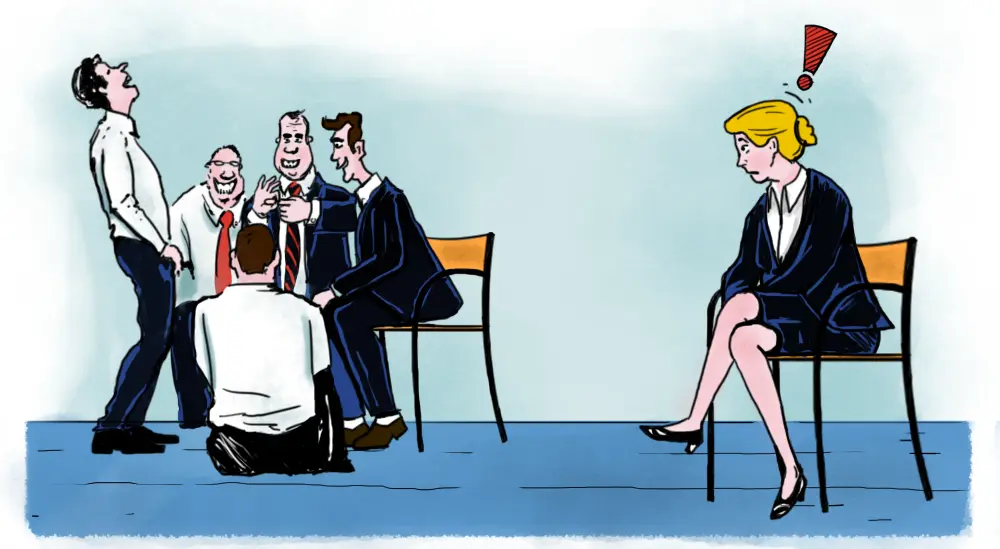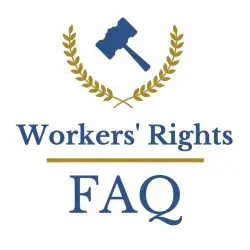Hostile Work Environments and Workplace Harassment
Protect Your Rights with a Hostile Work Environment Attorney
A hostile work environment harms employees. It also violates the law as a form of workplace harassment.

The law protects you from hostile work environments. Offensive comments or conduct disrupt the workplace and violate your rights.
However, the legal definition of a hostile workplace only covers certain types of harassment.
Learn about common hostile workplace misconceptions and how to prove a toxic work environment.
If your rights have been violated because of a hostile work environment, an attorney can help. Contact New York discrimination lawyer Charles Joseph for a free consultation to protect your rights today.
Harassment, offensive behavior, and unwelcome comments can make a workplace toxic. New York laws protect workers from toxic work environments. Employees have a right to work in a professional environment free from harassment. In order to qualify as a hostile work environment, the offensive conduct must meet a specific legal standard. The unwelcome comments or behavior must target a particular protected group. Hostile comments about a race, religion, gender, or disability status violate hostile work environment laws. Learn more by checking out our What is a Hostile Work Environment FAQ If your rights have been violated by a hostile work environment, you may be entitled to compensatory damages. Reach out to a hostile work environment attorney for information about your specific circumstances. “While most workplace harassment is a drop more subtle, I have had my share of egregious overt cases. A black woman called me once. The owner of her employer came out of his office, approached my client, and threatened her with a noose. This might have been a hard case to prove as there were no witnesses – but there were security cameras. The owner tried to erase the recording, which caught him holding a noose up to my client. But he was unaware that a video technician had been there the night before, saw what happened on the tape, and made a copy, which he gave to my client. That enabled us to resolve the case for what it was truly worth.” Charles Joseph A hostile work environment occurs when supervisors or co-workers act or behave in a discriminatory manner and their conduct affects your ability to work. In order to legally qualify as a toxic work environment, workplace harassment must target a protected class, including race, gender, religion, age, and disability status. Under federal law, this workplace harassment must be severe or pervasive. According to the federal standard, a single toxic remark or slur may not qualify as a hostile workplace. The harassment in the workplace must continue over time and be severe or pervasive enough to disrupt work or harm an employee’s career progress. However, local laws provide greater workplace protections. For example, New York City law has a lower bar for hostile work environments. The standard for a toxic work environment only requires that actions or behaviors be more than a mere “petty slight” or “trivial inconvenience”. Under the hostile work environment New York City standard, using a racial slur or a single act of sexual harassment may rise to the level of a hostile work environment. However, even under federal and state law a single use of the N-word, one picture of a noose, or a single episode of direct contact with an intimate body part, may create a hostile environment. The hostile work environment definition only covers certain workplace comments and conduct. Many people hold misconceptions about what counts as a hostile workplace. For example, a boss yelling at employees does not violate hostile work environment protections. Just because the employee is African-American or a woman does not make a boss’ rude conduct illegal – unless the boss only yells at women or African-Americans. Obnoxious behavior at work also does not violate the law, unless it targets a protected class. A hostile workplace only exists when workplace harassment targets protected classes. Anyone can report a hostile work environment – not just members of the targeted group. You can be a victim of a hostile environment based on religion even if you do not practice the religion targeted by workplace harassment. Similarly, men can report a hostile workplace because of sexual harassment against women. If the offensive discriminatory behavior makes it hard to do your job, you may have a claim. Anyone at work can create a hostile environment – not just your direct supervisor. Coworkers, supervisors in other departments, and non-employees like vendors can all create a hostile workplace. Employers have a responsibility to prevent hostile work environments. If you reported the harassment to human resources and your company did not address the problem, your employer is liable for the hostile work environment. Similarly, if it is reasonable to assume your employer knew about the harassment and did nothing, your employer may be liable. A hostile workplace only violates legal protections if unwelcome conduct targets a protected class. Federal, state, and local laws identify the protected classes, which include race, gender, religion, disability status, age, and other groups. Under New York City laws, these protected classes include marital status, caregiver status, gender identity, and other groups not covered by federal law. A hostile work environment lawyer can help determine whether the offensive conduct targeted a protected class. Employees do not have to be a member of the protected class to experience a hostile work environment. White employees can file a complaint about a hostile workplace if offensive comments about another race make the workplace toxic. Christians can file a complaint about hostile comments directed toward another religion. And young employees can complain about ageism in the workplace creating a hostile environment. In addition to creating a hostile work environment, harassment targeting these protected groups may violate workplace discrimination protections. A hostile work environment breaks discrimination laws. Targeting a group because of their race, religion, gender, or another protected status violates discrimination protections. Under federal, state, and local laws, harassment based on gender, for example, qualifies as a form of gender discrimination. Workplace discrimination laws also include hostile work environment protections. These laws provide protections against race discrimination, gender discrimination, age discrimination, LGBTQ discrimination, and other forms of discrimination. When employees target protected groups with discrimination or harassment, hostile work environment laws offer protections. Victims of hostile work environments may be entitled to compensatory damages for their emotional distress. If they also experienced retaliation, they may be entitled to back pay and front pay. Creating a hostile environment at work qualifies as harassment. The same laws that protect against workplace discrimination also provide protections against harassment. Similarly, sexual harassment at work can create a hostile work environment. For example, a man who repeatedly pressures his coworker to go on a date may be guilty of sexual harassment and creating a hostile work environment. Sexual harassment can also include displaying pornographic images at work, making offensive sexual remarks, or offensive sexual behavior at work. New York sexual harassment laws provide additional protections for people who experience sexual harassment at work. Hostile work environments take many forms. Courts must determine whether offensive conduct qualifies as a hostile work environment. The following examples include acts and behaviors that meet the definition of a hostile workplace. Hostile work environment examples: These examples not only qualify as a hostile work environment, they may also violate sexual harassment and discrimination protections. If you file a hostile work environment lawsuit, you will need to provide evidence that you faced a hostile work environment. This can include notes about the hostile conduct, copies of emails you sent to your supervisor or human resources department, and testimony from your coworkers. Steps to take after experiencing a hostile work environment: Taking steps immediately after experiencing a hostile work environment can increase your chances of winning your case. Creating documentation of the hostile conduct can serve as proof in a lawsuit. It can help establish that your employer knew about workplace harassment and did not sufficiently address it. Documentation can also demonstrate the toll the hostile work environment took on employees. You may have a stronger case if you notified your supervisor or human resources and your employer did not sufficiently address the offensive conduct. This increases the likelihood that a court will find your employer liable for the hostile work environment. A hostile work environment attorney can help you gather materials to prove your case. If you’ve faced a hostile work environment, you can file a lawsuit against your employer or former employer. A hostile work environment attorney can help you gather evidence, file your claim, and protect your legal rights. Charles Joseph offers free, confidential consultations to discuss your hostile work environment case.
Know Your Rights – What is a Hostile Work Environment?
What Counts as a Hostile Work Environment?
Hostile Work Environment Misconceptions
Protected Classes
Discrimination and Hostile Work Environments
Sexual Harassment and Hostile Work Environments
Hostile Work Environment Examples
How to Prove a Hostile Work Environment
Filing a Hostile Work Environment Lawsuit
Hostile Work Environment FAQs
